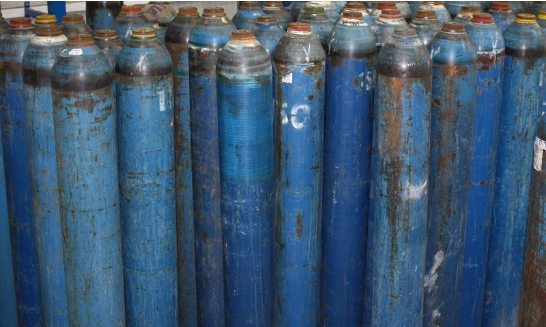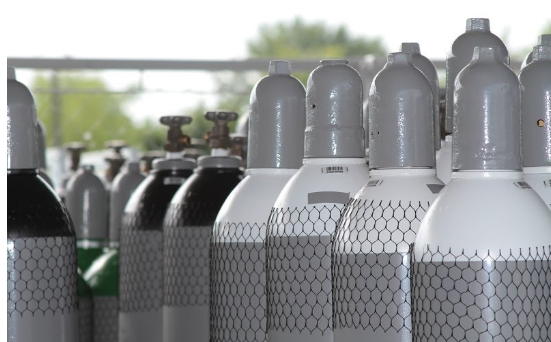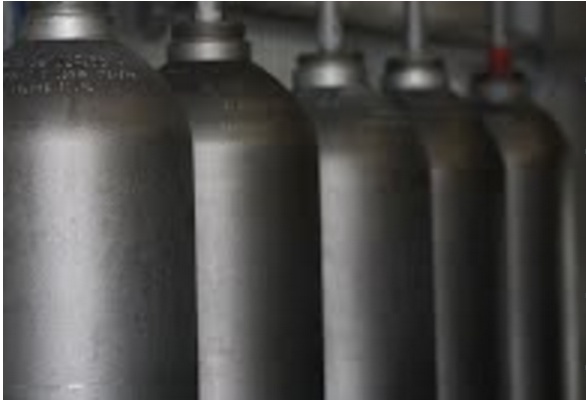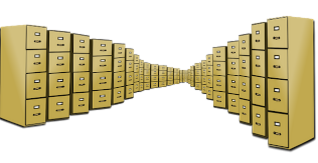- For secure high-pressure
- +36 62 999 051
- info@pwent.eu
50 steps and LEAN in the gas cylinder refurbishment
Last Updated on 3 years ago by Lajos SZABÓ
Gas cylinder refurbishment process
In this series of article, I target to spread the LEAN philosophy in the field of Gas cylinder refurbishment and maintenance.
What is the LEAN? The simplest definition of the LEAN is: to reach a definitive target on a specified quality with the less effort and energy. The LEAN always put the customer into the central. The customer has to specify what is the value? What is the target. Of course it is matter what is the value what he/she is ready to pay.
Probably you know the market research situation:
Market research on gas cylinder refurbishmentIs this new product good?
1. Yes
2. It is fantastic
3. First class
And would you use it?
• Certainly
• Of course
…and then: how much would you pay for it?
• Well….
• I need to think about it.
• Nothing
• 0 EUR
After this we should ask a question from ourselves if we created a real value or just spent some time and energy.
According Taiichi Ohno- the founder of the lean philosophy:
We should start the lean philosophy to define the value by intention. This definition has to be connected to a real product with defined parameters on a defined price level. We create this specification through a conversation with the customer.
What is the product? We will focus on the gas cylinder refurbishment service in our article series.
SAFETY: well documented maintenance according to the referred standards. We do this with the aim to use the gas cylinder could be keep in service with safety as long as we can.
The biggest player on this field are the gas factories. Just a quick and not complete list in alphabetic order: Air Liquide, Air Poducts, Istrabenz, Linde , Messer, Praxair, SAPIO, SIAD, SOL…
The partners’ main product what they sell is not the gas cylinder. They like to sell gas or they like to use gas. The gas cylinder is just a necessary bad thing. If it won’t be necessary, then they would not buy it. In spite of that the gas cylinder renting fee is rather high it just gives a small portion of the gas factories income. If they could sell the gas without cylinders then probably I would write an article about my hobby, about the beekeeping and the PWENT LTD would not trade with gas cylinder refurbishment machines.
Different companies have different requirements. Remember, keep your focus on the customer. The Hungarian world champion bar mixer Mr. András Lajsz has the following conversation in a TV show:
(Reporter) – Is it true if you open a bottle of Champagne, it should not give even a small sound?
(Mr. Lajsz András) – if the customer wants I could shoot his eyes with the cork
It is a little bit extreme but I regularly say on the gas field: If the customer asks us to paint small little pink butterflies on the gas cylinders, then we should calculate a price for it.
Beside the basic product – SAFETY- we could talk about many products on the field of maintenance what the customer wants to pay for:
used gas cylinders
Aesthetics
If there is not safety issue against the cylinders and the color on the cylinders is recognizable then it fulfills the standards requirements. This could be some paint patches on the next or on the body. Even if it is a peeled of and bad quality, bad condition paint. Against this you could have a good quality powder paint, applied after a shoot blasting. The paint is UV and corrosion proof, stand against the physical impacts. The quality could mean a hardly readable manual stamping under the paint surface or a well contoured, stamping done by a dot marking machine.
Quality could mean rusty protection cap or rusty neck ring or could means a well refurbished cap and neck ring thread. The market will be stronger and stronger you have to consider the customer needs. While on the medical gas field the requirements and the GMP manufacturing set a high level aesthetic standard, the requirements are not so strict on the other field. If you want to judge that you provide a good quality to your customers then you should work with scuba divers.
According to my experience the divers has almost personal relation with the gas cylinders, so if you have some quality problem then in a very short time you will know about it.
Cleanliness
Outer or inner. An outer cleaniness could be handled with a manual wire brush, and a painting roller but we could manage this with a close cycle conveyor painting system with shoot blasting, powder painting, and baking owen. In the first method we could expect on remaining old paints and corrosion. The foot and the foot ring – most corrosive part of the cylinder – have to handle separately with a rather big manual work.
Many times the maintenance company use the pressure testing pad’s inverter part to clean and paint the foot of the cylinders. This is decreasing the capacity of the testing bench. It is up to your agreement with your partners what they are looking for and what they are paying for.
gascylinder outer surface
Some of the gas factories just clean the inner part of the cylinders if the safety standard is required or it is necessary for the safe inside inspection. Other gas factories clean the inner part of the cylinder automatically in case of medical or food application. It is a question if it is a basic service, advantage in the competition or it is an extra service on the specific market.
Time and speed
gas cylinder refurbishment time and moneyThe lost money because of standing has to be paid by somebody. The investment – here the gas cylinder – is good when every days is earning money through all of its life. It is matter how many time we are losing during the 5-10 years retesting cycle. The partner’s interest is to receive the cylinder back within days. Today the market expectation is that to receive the cylinders back within 2 weeks. If the refurbishing company is giving back the cylinders after maintenance within 2 weeks without any problem, then the customer is satisfied. What will happened if the customer asked back the cylinder iwthin 3 days? What would happened if we could just have 1 day for the cylinder maintenance? Is it possible? We have this intention and not just as an extra. The multinational companies like to think in CAPEX nowadays. “CASH is the KING” with small investment generate big money flow and they are expecting fast return. Compare the gas users need and the number of the cylinders the ratio of the available number of cylinders are decreasing. Instead of buying new cylinders, the gas factorie prefer the optimized cylinder management and to pull the older cylinder again from parking position into the continuous cycling. It is forbidden now to have cylinder what are put aside. For the maintenance of the current cylinders has fewer time nowadays not to cause a loss and supply problem.
Gas cylinder refurbishment process
In this series of article, I target to spread the LEAN philosophy in the field of Gas cylinder refurbishment and maintenance.
What is the LEAN? The simplest definition of the LEAN is: to reach a definitive target on a specified quality with the less effort and energy. The LEAN always put the customer into the central. The customer has to specify what is the value? What is the target. Of course it is matter what is the value what he/she is ready to pay.
Probably you know the market research situation:
Market research on gas cylinder refurbishmentIs this new product good?
1. Yes
2. It is fantastic
3. First class
And would you use it?
• Certainly
• Of course
…and then: how much would you pay for it?
• Well….
• I need to think about it.
• Nothing
• 0 EUR
After this we should ask a question from ourselves if we created a real value or just spent some time and energy.
According Taiichi Ohno- the founder of the lean philosophy:
We should start the lean philosophy to define the value by intention. This definition has to be connected to a real product with defined parameters on a defined price level. We create this specification through a conversation with the customer.
What is the product? We will focus on the gas cylinder refurbishment service in our article series.
SAFETY: well documented maintenance according to the referred standards. We do this with the aim to use the gas cylinder could be keep in service with safety as long as we can.
The biggest player on this field are the gas factories. Just a quick and not complete list in alphabetic order: Air Liquide, Air Poducts, Istrabenz, Linde , Messer, Praxair, SAPIO, SIAD, SOL…
The partners’ main product what they sell is not the gas cylinder. They like to sell gas or they like to use gas. The gas cylinder is just a necessary bad thing. If it won’t be necessary, then they would not buy it. In spite of that the gas cylinder renting fee is rather high it just gives a small portion of the gas factories income. If they could sell the gas without cylinders then probably I would write an article about my hobby, about the beekeeping and the PWENT LTD would not trade with gas cylinder refurbishment machines.
Different companies have different requirements. Remember, keep your focus on the customer. The Hungarian world champion bar mixer Mr. András Lajsz has the following conversation in a TV show:
(Reporter) – Is it true if you open a bottle of Champagne, it should not give even a small sound?
(Mr. Lajsz András) – if the customer wants I could shoot his eyes with the cork
It is a little bit extreme but I regularly say on the gas field: If the customer asks us to paint small little pink butterflies on the gas cylinders, then we should calculate a price for it.
Beside the basic product – SAFETY- we could talk about many products on the field of maintenance what the customer wants to pay for:
used gas cylinders
Aesthetics
If there is not safety issue against the cylinders and the color on the cylinders is recognizable then it fulfills the standards requirements. This could be some paint patches on the next or on the body. Even if it is a peeled of and bad quality, bad condition paint. Against this you could have a good quality powder paint, applied after a shoot blasting. The paint is UV and corrosion proof, stand against the physical impacts. The quality could mean a hardly readable manual stamping under the paint surface or a well contoured, stamping done by a dot marking machine.
Quality could mean rusty protection cap or rusty neck ring or could means a well refurbished cap and neck ring thread. The market will be stronger and stronger you have to consider the customer needs. While on the medical gas field the requirements and the GMP manufacturing set a high level aesthetic standard, the requirements are not so strict on the other field. If you want to judge that you provide a good quality to your customers then you should work with scuba divers.
According to my experience the divers has almost personal relation with the gas cylinders, so if you have some quality problem then in a very short time you will know about it.
Cleanliness
Outer or inner. An outer cleaniness could be handled with a manual wire brush, and a painting roller but we could manage this with a close cycle conveyor painting system with shoot blasting, powder painting, and baking owen. In the first method we could expect on remaining old paints and corrosion. The foot and the foot ring – most corrosive part of the cylinder – have to handle separately with a rather big manual work.
Many times the maintenance company use the pressure testing pad’s inverter part to clean and paint the foot of the cylinders. This is decreasing the capacity of the testing bench. It is up to your agreement with your partners what they are looking for and what they are paying for.
gascylinder outer surface
Some of the gas factories just clean the inner part of the cylinders if the safety standard is required or it is necessary for the safe inside inspection. Other gas factories clean the inner part of the cylinder automatically in case of medical or food application. It is a question if it is a basic service, advantage in the competition or it is an extra service on the specific market.
Time and speed
gas cylinder refurbishment time and moneyThe lost money because of standing has to be paid by somebody. The investment – here the gas cylinder – is good when every days is earning money through all of its life. It is matter how many time we are losing during the 5-10 years retesting cycle. The partner’s interest is to receive the cylinder back within days. Today the market expectation is that to receive the cylinders back within 2 weeks. If the refurbishing company is giving back the cylinders after maintenance within 2 weeks without any problem, then the customer is satisfied. What will happened if the customer asked back the cylinder iwthin 3 days? What would happened if we could just have 1 day for the cylinder maintenance? Is it possible? We have this intention and not just as an extra. The multinational companies like to think in CAPEX nowadays. “CASH is the KING” with small investment generate big money flow and they are expecting fast return. Compare the gas users need and the number of the cylinders the ratio of the available number of cylinders are decreasing. Instead of buying new cylinders, the gas factorie prefer the optimized cylinder management and to pull the older cylinder again from parking position into the continuous cycling. It is forbidden now to have cylinder what are put aside. For the maintenance of the current cylinders has fewer time nowadays not to cause a loss and supply problem.
Data management
data management in gas cylinder refurbishmentSome smaller maintenance company is still working on paper base. The notified body fill out the paper, stamp it and sign it, and the certificate is ready. Just think over the traceability! What would have happened if we are looking for a specific cylinder’s certificate. We would like to optimise our paint order wit data! How could we trace back the numbers of the cylinders and colours what we painted in the past period? Definitely not based on the paperwork! We could save money on the optimal paint order. We didn’t put our money into not necessary colours and we don’t through away dried and not used paint what was not necessary (and pay the dangerous goods destroying). With the data we could serve the customer better but we could decrease our cost as well. After that it is our decision or matter of negotiation if we pass this advantage to the customer or keep it.
Problem free operation
problem free operation in gas cylinder maintenanceWe could talk about problem free operation from the view of money and time. The partner allows us to put back the used valves? What is the cost what he saves on it? Is it worth to it? Or in this case there will be more blockage and technical problem with the valves? This would mean additional transport, lost time and new maintenance…how much the customer pays for the problem free operation?
Higher level SAFETY
higher safet in gas cylinder maintenanceInstead of the hydraulic pressure testing we could inspect the cylinders with Ultrasonic testing. It will provide us bigger safety but it has cost. On one hand the bigger cost will be shown at the side of cylinder owners – bigger scrapping ratio. This is not beard by the maintenance company but the owner. The maintenance company’s cost is the higher quality technician’s cost and bigger investment and amortization. Is the customer ready to pay higher price for bigger safety?
Before we would look through the complete list about step of maintenance let’s talk about what we would like to reach? The list will be the base of our intention to see what is a clear loss in our operation.
We have to focus on these point to be able to optimize our operation. We will do some kind of loss hunting during our trip together (loss thropy). Soon we will see our wasted time at the wrong step. We would like to decrease those steps. In this tour the main aim is the reach a loss less one step flow in our operation.
This is an ideal perfect future and of course we won’t be able to reach this – but target has to be to move into that direction. I would like to share my favourite sentence:
James P Womack – LEAN
“It is a paradox that the perfection never could be imagine in perfect way. When you reach the point what you believed before it is perfection than immediately you will see the next level. “
The idea what I will share with you won’t have a perfect idea as well, but my intention is to reach a higher level, and the higher level could be measured in numbers as well. After this point you will see what kind of errors we made and what is not perfect yet, where can we made still enhancements.
Please don’t forget about the target is the loss less one piece flow. Why the one piece flow? We will touch that in my following article but until that time I share a video with you. I was also among the unbelievers but I try it test it and measure it. It is TRUE. Let’s do it everybody:
https://www.youtube.com/watch?v=Bi9R1Hqr8dI
LEAN one piece flow model
Remember to Taiichi Ohno product definition! What is our product? We will continue on two track:
Simply product without any extra. In the future I will call it “Low Cost” .
The second solution will be with higher level services according to the market expectation. I will call it “Quality customer”.
What is happening during a maintenance of a gas cylinder? Think it over:
1. Loading the truck on customer’s site
2. Material forwarding – Transport between customer and maintenance site
3. Unload the truck
4. Material forwarding – stocking
5. Quality and quantity check
6. LOT marking
7. Administration, put cylinders on stock
8. Material forwarding– remove from stocking area
9. Remove cap
10. Remaining gas handling
11. Material forwarding
12. Neck cleaning for neck better visibility or complete cleaning to prepare painting
13. Valve mounting
14. Weight measuring
15. Administration – following process definition (normal, scraping, …)
16. Checking with calibers
17. Gas cylinder stamping
18. Material forwarding
19. Pressure testing
20. Drying
21. Material forwarding
22. Inner cleaning
23. Material forwarding – group creating for notified inspection
24. Waiting for outer notified body
25. Material forwarding
26. Outer- Inner official notified body inspection
27. Scraping in case of bad cylinders
28. Official administration with Notified Body
29. Material forwarding
30. Outer cleaning
31. Painting
32. Material forwarding
33. Waiting for drying
34. Material forwarding
35. Neck painting, logo painting
36. Material forwarding
37. Waiting for drying
38. Material forwarding
39. Final checking
40.Valve mounting
41. Accessories mounting
42. Valve protection mounting
43. Packaging into wooden pallets or metal cage
44. Final packaging checking
45. Material forwarding
46. Waiting
47. Truck loading
48. Administration
49. Material forwarding – Transport between maintenance site and customer
50. Unload the truck at customer
The list above will be in the focus of my next article. Until that time try to categories the actions what you do during maintenance according to the following list:
Valuable action – the customer pay for it and feel the benefit of it
Not vale creating action – but necessary action
Loss
Write up how much time is the definite action
This categorized list will be the base of the following materials. What is the ratio of the valuable and non valuable actions? Next article will be know about the form of the losses. We will discover the already happened or possible losses on the actions listed above.
developing in gascylinders maintenance
I give the following title to this article:
“Losses in the operation. My biggest faults – learn from it”
Szabó Lajos
Managing Director
Pwent Ltd.
lajos@pwent.eu
www.pwent.eu
GSM: +36 (20) 9273-719
Please let me know your oppinion about this article
Subscribe our newsletter to receive immediate news about other articlesand be entitled your present at the next purchase. Click here…
Data management
data management in gas cylinder refurbishmentSome smaller maintenance company is still working on paper base. The notified body fill out the paper, stamp it and sign it, and the certificate is ready. Just think over the traceability! What would have happened if we are looking for a specific cylinder’s certificate. We would like to optimise our paint order wit data! How could we trace back the numbers of the cylinders and colours what we painted in the past period? Definitely not based on the paperwork! We could save money on the optimal paint order. We didn’t put our money into not necessary colours and we don’t through away dried and not used paint what was not necessary (and pay the dangerous goods destroying). With the data we could serve the customer better but we could decrease our cost as well. After that it is our decision or matter of negotiation if we pass this advantage to the customer or keep it.
Problem free operation
problem free operation in gas cylinder maintenanceWe could talk about problem free operation from the view of money and time. The partner allows us to put back the used valves? What is the cost what he saves on it? Is it worth to it? Or in this case there will be more blockage and technical problem with the valves? This would mean additional transport, lost time and new maintenance…how much the customer pays for the problem free operation?
Higher level SAFETY
higher safet in gas cylinder maintenanceInstead of the hydraulic pressure testing we could inspect the cylinders with Ultrasonic testing. It will provide us bigger safety but it has cost. On one hand the bigger cost will be shown at the side of cylinder owners – bigger scrapping ratio. This is not beard by the maintenance company but the owner. The maintenance company’s cost is the higher quality technician’s cost and bigger investment and amortization. Is the customer ready to pay higher price for bigger safety?
Before we would look through the complete list about step of maintenance let’s talk about what we would like to reach? The list will be the base of our intention to see what is a clear loss in our operation.
We have to focus on these point to be able to optimize our operation. We will do some kind of loss hunting during our trip together (loss thropy). Soon we will see our wasted time at the wrong step. We would like to decrease those steps. In this tour the main aim is the reach a loss less one step flow in our operation.
This is an ideal perfect future and of course we won’t be able to reach this – but target has to be to move into that direction. I would like to share my favourite sentence:
James P Womack – LEAN
“It is a paradox that the perfection never could be imagine in perfect way. When you reach the point what you believed before it is perfection than immediately you will see the next level. “
The idea what I will share with you won’t have a perfect idea as well, but my intention is to reach a higher level, and the higher level could be measured in numbers as well. After this point you will see what kind of errors we made and what is not perfect yet, where can we made still enhancements.
Please don’t forget about the target is the loss less one piece flow. Why the one piece flow? We will touch that in my following article but until that time I share a video with you. I was also among the unbelievers but I try it test it and measure it. It is TRUE. Let’s do it everybody:
https://www.youtube.com/watch?v=Bi9R1Hqr8dI
LEAN one piece flow model
Remember to Taiichi Ohno product definition! What is our product? We will continue on two track:
Simply product without any extra. In the future I will call it “Low Cost” .
The second solution will be with higher level services according to the market expectation. I will call it “Quality customer”.
What is happening during a maintenance of a gas cylinder? Think it over:
1. Loading the truck on customer’s site
2. Material forwarding – Transport between customer and maintenance site
3. Unload the truck
4. Material forwarding – stocking
5. Quality and quantity check
6. LOT marking
7. Administration, put cylinders on stock
8. Material forwarding– remove from stocking area
9. Remove cap
10. Remaining gas handling
11. Material forwarding
12. Neck cleaning for neck better visibility or complete cleaning to prepare painting
13. Valve mounting
14. Weight measuring
15. Administration – following process definition (normal, scraping, …)
16. Checking with calibers
17. Gas cylinder stamping
18. Material forwarding
19. Pressure testing
20. Drying
21. Material forwarding
22. Inner cleaning
23. Material forwarding – group creating for notified inspection
24. Waiting for outer notified body
25. Material forwarding
26. Outer- Inner official notified body inspection
27. Scraping in case of bad cylinders
28. Official administration with Notified Body
29. Material forwarding
30. Outer cleaning
31. Painting
32. Material forwarding
33. Waiting for drying
34. Material forwarding
35. Neck painting, logo painting
36. Material forwarding
37. Waiting for drying
38. Material forwarding
39. Final checking
40.Valve mounting
41. Accessories mounting
42. Valve protection mounting
43. Packaging into wooden pallets or metal cage
44. Final packaging checking
45. Material forwarding
46. Waiting
47. Truck loading
48. Administration
49. Material forwarding – Transport between maintenance site and customer
50. Unload the truck at customer
The list above will be in the focus of my next article. Until that time try to categories the actions what you do during maintenance according to the following list:
Valuable action – the customer pay for it and feel the benefit of it
Not vale creating action – but necessary action
Loss
Write up how much time is the definite action
This categorized list will be the base of the following materials. What is the ratio of the valuable and non valuable actions? Next article will be know about the form of the losses. We will discover the already happened or possible losses on the actions listed above.
developing in gascylinders maintenance
I give the following title to this article:
“Losses in the operation. My biggest faults – learn from it”
Szabó Lajos
Managing Director
Pwent Ltd.
lajos@pwent.eu
www.pwent.eu
GSM: +36 (20) 9273-719
Please let me know your oppinion about this article
Subscribe our newsletter to receive immediate news about other articlesand be entitled your present at the next purchase. Click here…











